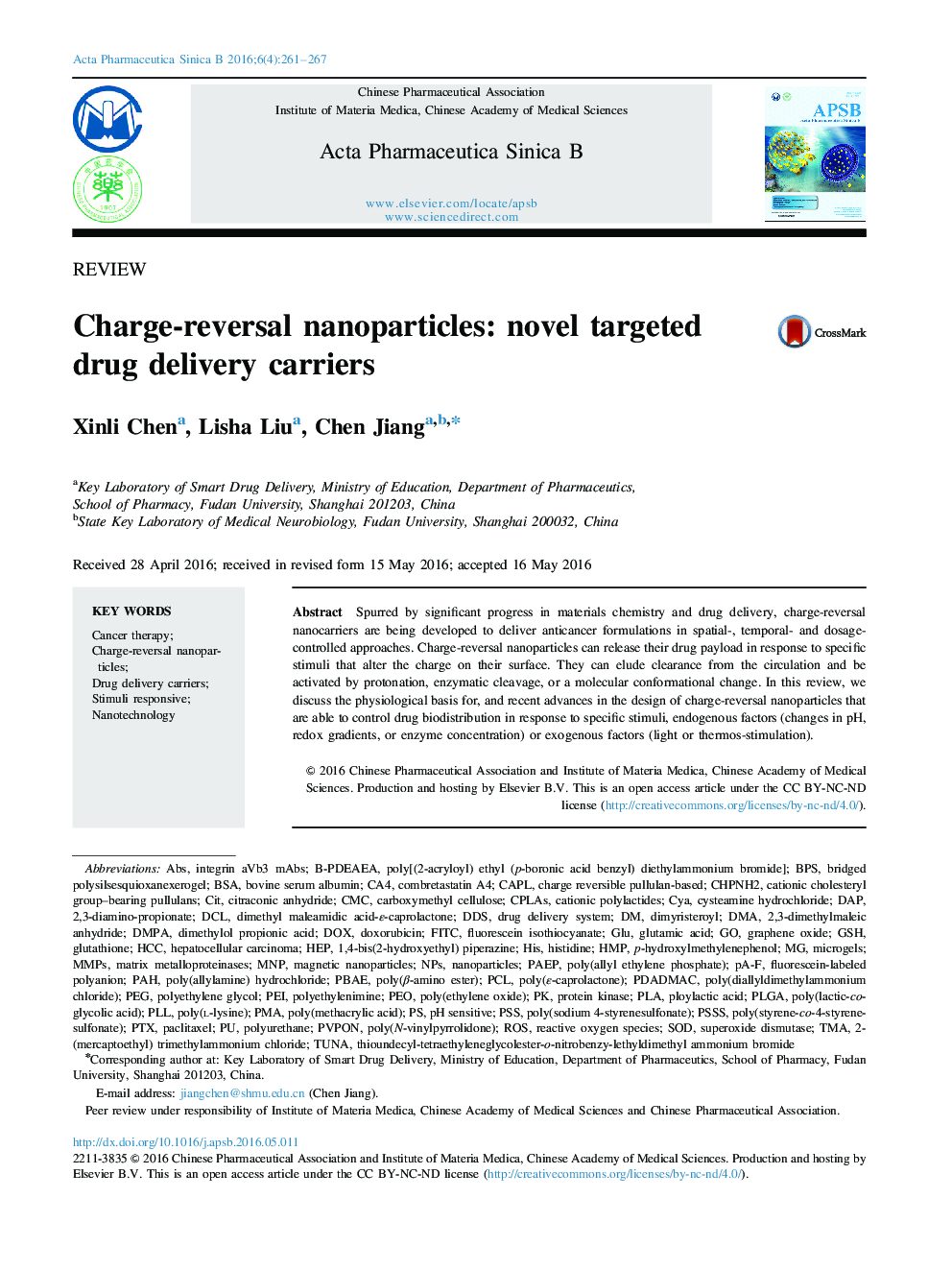| کد مقاله | کد نشریه | سال انتشار | مقاله انگلیسی | نسخه تمام متن |
|---|---|---|---|---|
| 2474438 | 1402749 | 2016 | 7 صفحه PDF | دانلود رایگان |
Spurred by significant progress in materials chemistry and drug delivery, charge-reversal nanocarriers are being developed to deliver anticancer formulations in spatial-, temporal- and dosage-controlled approaches. Charge-reversal nanoparticles can release their drug payload in response to specific stimuli that alter the charge on their surface. They can elude clearance from the circulation and be activated by protonation, enzymatic cleavage, or a molecular conformational change. In this review, we discuss the physiological basis for, and recent advances in the design of charge-reversal nanoparticles that are able to control drug biodistribution in response to specific stimuli, endogenous factors (changes in pH, redox gradients, or enzyme concentration) or exogenous factors (light or thermos-stimulation).
Charge-reversal nanoparticles are able to shade surface charge during blood circulation and re-expose at tumor sites. They are designed to be susceptible to specific stimuli, either endogenous factors (changes in pH, redox gradients, or enzyme concentration) or exogenous factors (light or thermos-stimulation).Figure optionsDownload as PowerPoint slide
Journal: Acta Pharmaceutica Sinica B - Volume 6, Issue 4, July 2016, Pages 261–267
